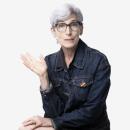S.F. Board OKs Reading of Works by Nonwhites
- Share via
SAN FRANCISCO — Confronted by hundreds of angry students, teachers and parents demanding that the school curriculum be diversified, the school board voted unanimously to require that nonwhite authors be taught in the city’s high schools.
“We are now the first district in the nation to require the reading of nonwhite authors,” said school board member Jill Wynns. “We also voted for a requirement that writers who are lesbian, gay, bisexual and transgender be identified.”
The compromise decision--drafted during a raucous five-hour meeting Thursday night--watered down a controversial proposal to require that more than 50% of the books read by high school students be written by nonwhite authors.
The book quota, described by its detractors as “literary apartheid,” was proposed by the board’s two African American members a month ago, catapulting the city’s schools into the national spotlight.
But after weeks of controversy, the board softened the original proposal and adopted a resolution requiring that authors of diverse race, ethnicity and sexual orientation be taught in ninth-, 10th- and 11th-grade classrooms. The new requirement fell short of setting a quota.
Now, such authors are included in recommended reading lists, but until this week the only three required works were “The Adventures of Huckleberry Finn,” by Mark Twain, “The Canterbury Tales,” by Geoffrey Chaucer, and “Romeo and Juliet,” by William Shakespeare. The district no longer requires specific titles.
The board did not reach its decision until nearly midnight Thursday after hours of passionate and polarizing testimony by Bay Area residents, who told the board that African American, Latino, Asian and other minority students learn better when they learn about themselves.
“The purpose of education is to reflect and service the community, but it’s not working here,” said Katya Henriquez, 24. “We are 87% minority [in the school district], but we have such trouble graduating and going on to college. . . . The quota is necessary. . . . We need to send a message to our children that what they write will someday be the classics.”
Emotions in Audience Run High
The meeting regularly erupted into spontaneous applause, cheers and the occasional hiss. A few shouts of “racist!” rang out when the rare, unpopular opinion--that quotas are not necessary--was voiced.
Students as young as 13 spoke about their need to learn more about their own cultures. Several carried signs with slogans like “Ethnic Lit IS American Lit” and “We Shouldn’t Have to Read About Ourselves Only on Our Own Time.”
And they were quick to interrupt those with whom they disagreed, like Linda Blondis of San Francisco, who told the board over the increasing din that “the goal of education is not to instill self-esteem. The goal of education is not to teach people about their cultures. One of the things education helps us do is expand beyond your world. You already know what your world is.”
But Blondis, who is white, was in the minority Thursday night, when the school board voted to mandate that high school freshmen, sophomores and juniors read authors who reflect the diversity of culture, race and class found in the school district.
Twelfth-graders are exempt from the requirement--for now--because they study British and European literature in their senior year. But the district staff was ordered to investigate ways to diversify even the senior reading list and told to report back in two months.
Of the district’s 19,823 high school students, 29% are of Chinese descent, 19% are Latino, 15% are African American, 13% are white, 8% are Filipino and the remainder are of ethnicities that range from Arabic and Korean to Native American and Samoan.
Although the original proposal addressed only issues of race, school board member Juanita Owens requested that sexual orientation also be a reading criteria. The addition drew little debate.
The only special interest left out of the new reading requirement was “gender equity,” Wynns said. And she would have pushed to include a mandate for female writers, she said, but “it seems to me that as the curriculum becomes more contemporary, it becomes more filled with women.”
The entire seven-member board voted to be included in the list of co-authors of the final resolution. But the original idea came from board members Steve Phillips and Keith Jackson, who at first suggested that seven of 10 books required each year be written by nonwhites. They later eased their stance by suggesting a quota of four out of seven books by nonwhites.
Before the meeting began, Phillips explained his desire for a reading quota as a need for “some level of enforcement. There are far more books than we have time to read, and there are studies that show multicultural education does have an impact” on the achievement gap of many minority students.
The time between his original suggestion and the decision to require nonwhite authors in the district “has probably been two of the most difficult weeks of my life,” he said just before the vote. He and Jackson “have been called Nazis . . . accused of ethnic cleansing.”
Indeed, the proposal struck an immediate chord across the nation, vaulting San Francisco’s schools onto editorial pages, television broadcasts, radio talk shows, into newspapers across the country, CNN, the “Today Show,” and Rush Limbaugh.
Opponents Raise Ebonics Issue
Opponents called it blatant racism, charging that it valued ethnicity over excellence and denigrated the expertise and judgment of San Francisco’s teachers. It was compared to the Oakland schools’ short-lived but controversial flirtation with Ebonics, the idea that many African American students spoke a unique dialect and should be instructed in that dialect.
Proponents of the San Francisco proposal argued the need to open up the literary canon to women and men of color because minority children are left cold by the words, as many said Thursday, “of dead white men.”
Throughout the debate, the literary contortions were never-ending: How can you force a black child to read Chaucer but not insist on Richard Wright also? How dare Toni Morrison edge out William Shakespeare? What about Isabel Allende? Amy Tan?
“By taking this action today, we are sending a message across this nation that it’s a new day in America,” Phillips said, “that we will respect and value and promote all the cultures in this country.”
Most speakers during the heated meeting pushed hard for numbers that they said would protect them--numbers that would ensure, they insisted, that they could see themselves in the works that they read.
“I want to learn about African Americans. I want to learn about Asian Americans,” said Duc Nim, 18. “I want to learn about Latino Americans. I want to learn about Americans.”
Raye Richardson, owner of one of the oldest black bookstores west of the Mississippi, described herself as “the product of an education that did not include one black writer. I bear the scars of that.”
Richardson derided many of the works she had been taught as a youth, rattling off the prologue from Chaucer’s Canterbury Tales in unintelligible Middle English, tapping her forehead and bemoaning the fact that she has “had it frozen up here for 65 years. It has done nothing for me but take up space.”
Students complained about being taught “The Diary of Anne Frank” during Black History Month (“It’s a nice story, but . . .”). “Huckleberry Finn”--one of three required titles in the district until Thursday--took the most heat, largely for Twain’s use of the word “nigger.”
“This is all a sign of white supremacy in our education system,” said Donald Simpson, 19, a student at San Francisco State. “I feel this is a disrespect to have a book that calls us ‘nigger’ 100 times, but you will never see a book with ‘cracker’ in it.”
No Easy Formula, Says Board Member
One young Latina complained that she had spent four years at George Washington High School here and never read a book by a Latino author--even though all 10th-graders spend the year reading “ethnic literature.”
To which board member Mary T. Hernandez replied: “I know what it feels like. I care. But I think the human experience is far too complex to compartmentalize based on the color of your skin.
“If seven of 10 books were required to be by people of color, [the requirement] could be satisfied by books that are all Asian and all male,” she continued. “It is impossible to have a perfect quota to reflect every person in every way.”
Speakers were given two minutes each to address the board--a restriction that parliamentarian Evelyn Wilson found impossible to enforce, as she waved yellow signs reading “30 seconds” and “time,” only to be ignored.
The audience was most incensed by a 90-minute presentation by district staff at the meeting’s start that sought to show how the administration has pushed for a diverse curriculum--including a current two-year effort to update the district’s reading lists.
As part of the presentation--which speakers complained cut into their time--Wallenberg High School English teacher Betty Tillman told the assembly via videotape that “we have been respectful of the diversity of the district and of the students we teach.”
Listing a string of titles by nonwhite authors that she regularly uses in the classroom--”The Invisible Man,” “The Color of Water,” “Cry the Beloved Country”--Tillman argued against the suggested quota.
Even without such restrictions, she said, “I select literature that challenges stereotypes. Teachers are capable of teaching, searching out and presenting well-qualified literature for our students.”
(BEGIN TEXT OF INFOBOX / INFOGRAPHIC)
RECOMMENDED READING
Long before San Francisco’s book wars broke out, the school district has been involved in a several-year process of updating the high school recommended reading lists. Below are some examples of books on the draft list:
***
Ninth Grade: World Literature
Chronicle of a Death Foretold, Gabriel Garcia Marquez
All Quiet on the Western Front, Erich Maria Remarque
Cry the Beloved Country, Alan Paton
The Odyssey, Homer
Paradise of the Blind, Duong ThuHuong
***
10th Grade: The Ethnic Experience in Literature
Autobiography of Malcolm X, Alex Haley
Black Boy, Richard Wright
Bless me, Ultima, Rudolfo Anaya
The Joy Luck Club, Amy Tan
Lakota Woman, Mary Crow Dog
***
11th Grade: American Literature
The Adventures of Huckleberry Finn, Mark Twain
The Bluest Eye, Toni Morrison
Death of a Salesman, Arthur Miller
The Fire Next Time, James Baldwin
I Will Fight No More Forever, Chief Joseph
***
12th Grade: English and European/World Literature
Brothers Karamazov, Fyodor Dostoevsky
The Canterbury Tales, Geoffrey Chaucer
Hamlet, William Shakespeare
Lord of the Flies, William Golding
Love in the Time of Cholera, Gabriel Garcia Marquez
Source: San Francisco Unified School District
Student Ethnicity
SAN FRANCISCO HIGH SCHOOLS
19,823 students as of January 1998
29% Chinese
19 Latino
15 Black
23 Other
13 White
LOS ANGELES UNIFIED SCHOOL DISTRICT
142,075 high school students for 1997-98 school year
69% Latino
13 Black
11 White
8 Asian and Other
ALL CALIFORNIA HIGH SCHOOLERS
1,559,080 students as of October 1996
42% White
36 Latino
14 Asian and Other
9 Black
Source: Los Angeles Unified and San Francisco School Districts; California Department of Education.
NOTE: Percentages may not equal 100 because of rounding.
More to Read
Sign up for Essential California
The most important California stories and recommendations in your inbox every morning.
You may occasionally receive promotional content from the Los Angeles Times.











